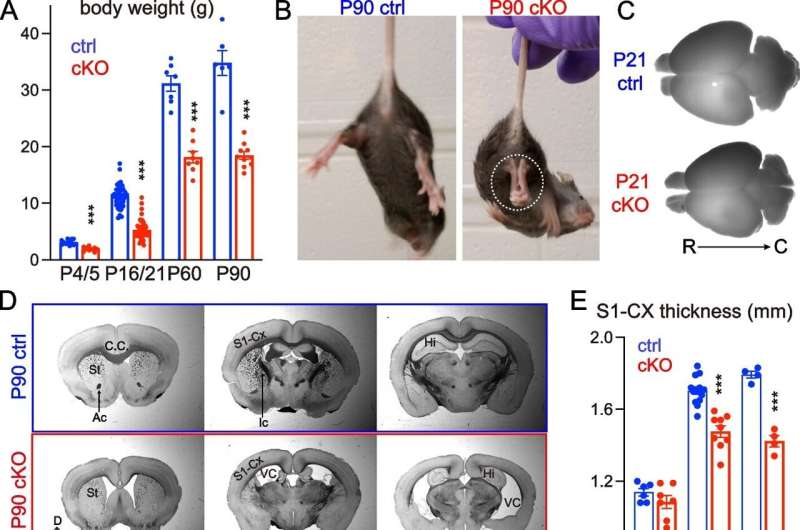This article has been reviewed according to Science X's editorial process and policies. Editors have highlighted the following attributes while ensuring the content's credibility:
fact-checked
trusted source
proofread
Researchers find enzyme plays much larger role in preventing neurodegenerative diseases

Indiana University researchers in the College of Arts and Sciences in Bloomington have identified a missing link that can help protect the brain from aging.
Hui-Chen Lu, professor and director of the Linda and Jack Gill Center for Biomolecular Science at IU, alongside graduate students Sen Yang and Zhen Xian Niou, found that nicotinamide nucleotide adenylyl transferase 2, or NMNAT2, provides energy to axons independent of the mitochondria.
It does this by propelling glycolysis, a process in which glucose is broken down to produce energy. This gives axons enough energy to carry out nerve impulses to the brain and other parts of the body, keeping them healthy and functional. The enzyme can play a critical role in fending off neurodegenerative diseases like ALS, Alzheimer's, Huntington's and Parkinson's as people age.
The study appears in Molecular Neurodegeneration.
Axons are long, thin fibers that connect nerve cells and allow them to communicate with each other. Axons are typically one micrometer in diameter—several times thinner than a human hair—making them vulnerable and easily damaged by inflammation, trauma, reduced blood flow to the brain and infection. Often, axon damage is the first sign of neurodegenerative disease, but their protection can delay neurodegeneration.
Axons quickly convey information throughout the entire body, a process of traveling long distances within an extremely short time scale that requires significant amounts of energy. However, the mitochondria, widely known as the cellular powerhouse, are in relatively sparse density in axons.
NMNAT2 is a vital provider of nicotinamide adenine dinucleotide for the brain. NAD has been studied intensively for its regenerative properties and is sometimes referred to as the "fountain of youth."
"This new finding showcases the importance of neuron-intrinsic glycolysis in supporting axonal transport, essential for the establishment and maintenance of neuronal circuitry," Lu said. "With this information, the next step could be designing drugs to target NMNAT2 to boost its expression or activity in pre-symptomatic stages of neurodegeneration."
Lu's laboratory has studied NMNAT2 extensively, publishing research in 2017 which found that caffeine, along with 23 other compounds, can increase the body's production of NMNAT2. In 2016, Lu published a study that found those with higher levels of NMNAT2 had greater resistance to cognitive decline as they aged.
More information: Sen Yang et al, NMNAT2 supports vesicular glycolysis via NAD homeostasis to fuel fast axonal transport, Molecular Neurodegeneration (2024). DOI: 10.1186/s13024-023-00690-9



















